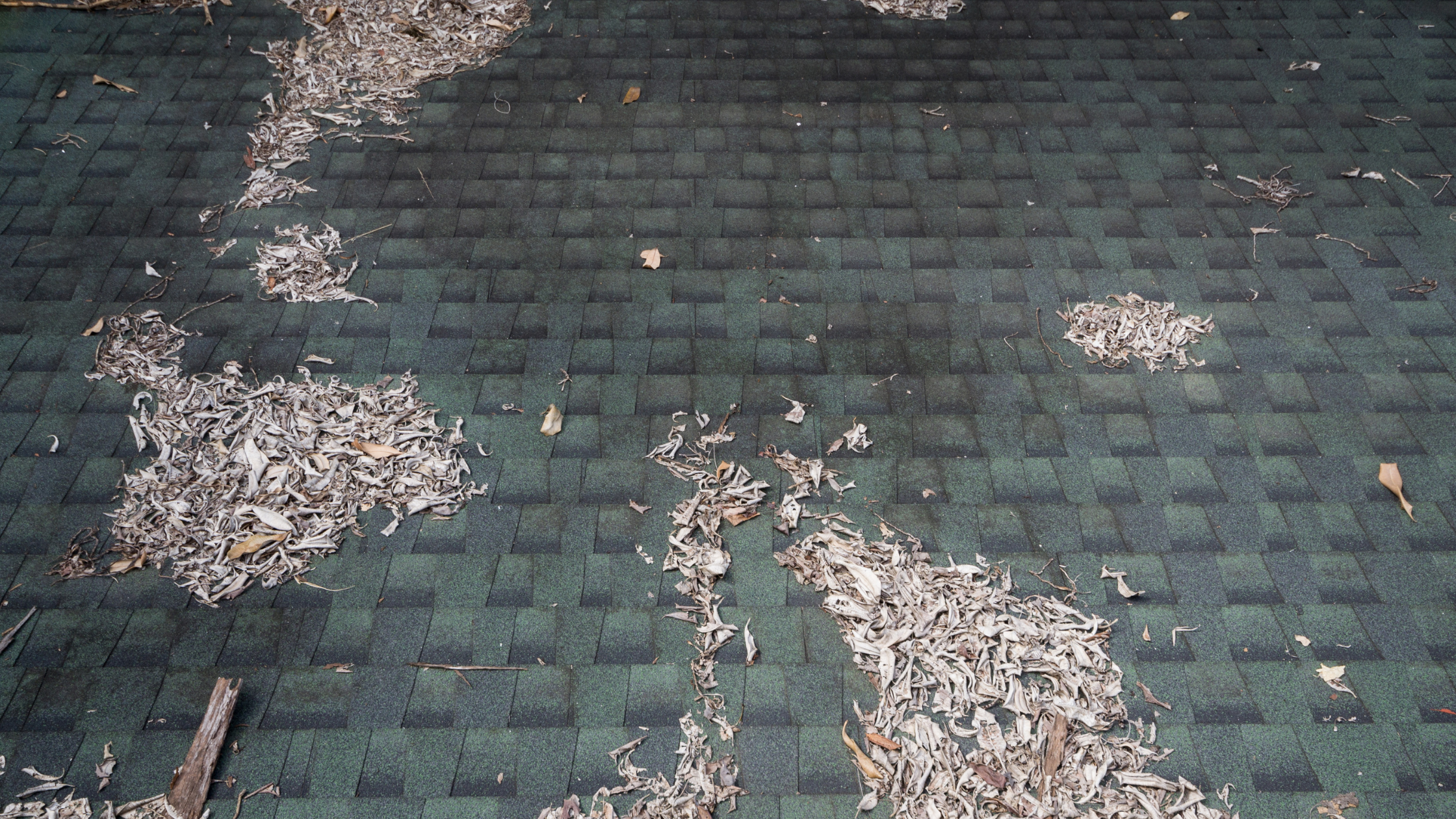
As a homeowner, you have many responsibilities on your plate. Unless it’s causing problems, your roof may not be on the top of yo
ur list of priorities. Unfortunately, the roof can collect much more than leaves or frisbees. It can also accumulate algae growth which, left unchecked, can silently damage your shingles over time.
Roof algae, a type of tiny bacteria that travels on the wind, can cause dark stains or streaks on your shingles. The more humid it is where you live, the more algae has the opportunity to grow. With spring and summer quickly approaching, it is important to know how to identify roof algae, how to get rid of it, and how to prevent it from coming back.
Identifying Roof Algae
It is relatively easy to identify roof algae on your home. Once the bacteria lands on your rooftop, it can multiply quickly, particularly when humidity is high and moisture plentiful. As it spreads down your roof, it leaves behind dark stains that can appear black or blue-green. Unfortunately, by the time algae is visible to you, it’s likely been growing for several months.
There is some good news, however: There isn’t much evidence that algae growth can cause real damage to your roof. On the other hand, the stains it causes are unattractive, and if you have asphalt shingles that contain limestone, the algae will slowly consume that limestone and weaken the shingles over time. Weakened shingles can leave your home susceptible to damage and roof leaks.
Getting Rid of Roof Algae
It’s important to clean up your roof as much as you can as soon as you notice the algae. Not only could it eventually lead to roof damage, but if that algae partners with mold or mildew, it can put your health at risk. If you are able to catch the algae growth before it takes over, you could try a DIY solution:
- Apply a 50/50 mix of chlorine bleach and water with a sprayer on the stains, wait 15 to 20 minutes, then rinse thoroughly with low water pressure.
- Before you begin and after you’ve finished, wet down any plants in the runoff zone to protect them from the bleach. Covering vulnerable plants with plastic provides extra protection.
- To avoid injury, please use caution while on top of your roof and while using chemical cleaners. Wear the correct safety equipment, like goggles, rubber gloves, safety rope, and slip-resistant shoes.
The best thing to do for algae growth is to contact a trusted roofing professional as soon as you notice it. They can take care of the algae growth for you as safely and efficiently as possible.
Preventing Algae Regrowth
To hinder future algae growth, make your roof as unattractive to algae as you can by preventing moisture as much as possible. Try increasing the amount of sun exposure by trimming back branches that hang over your roof. Get rid of any debris that accumulates on top of your house, and keep your gutters clean. Schedule regular roof and gutter maintenance to ensure your roof is wicking away water as it should. If the area you live in is extremely humid, you could also purchase algae-resistant roofing materials or treat the shingles with a moisture-resistant chemical protective layer. Algae-resistant shingles are typically infused with copper and/or zinc to prevent mold, bacteria, and algae growth.
Subscribe to our blog today for more home maintenance advice.







Comments